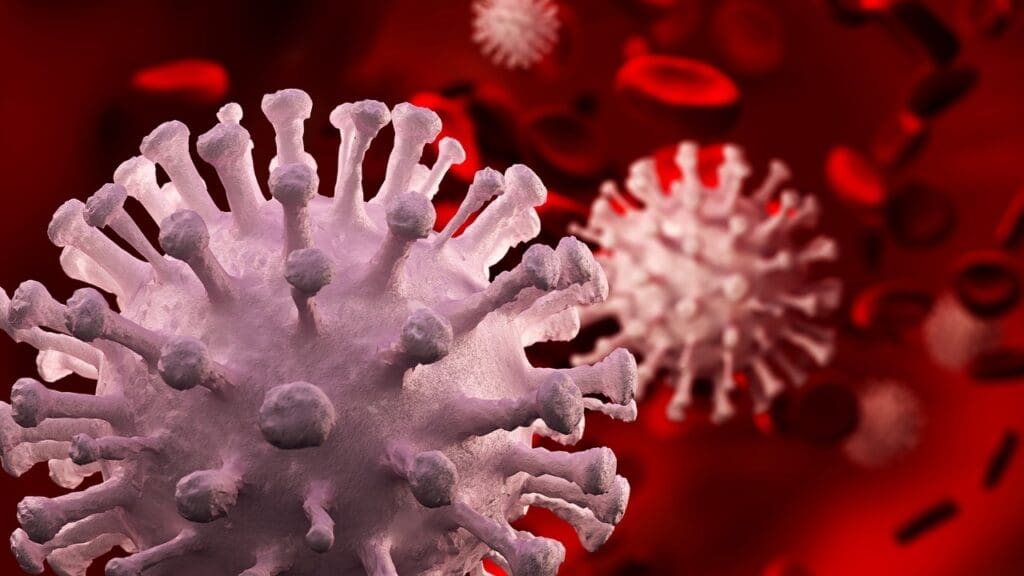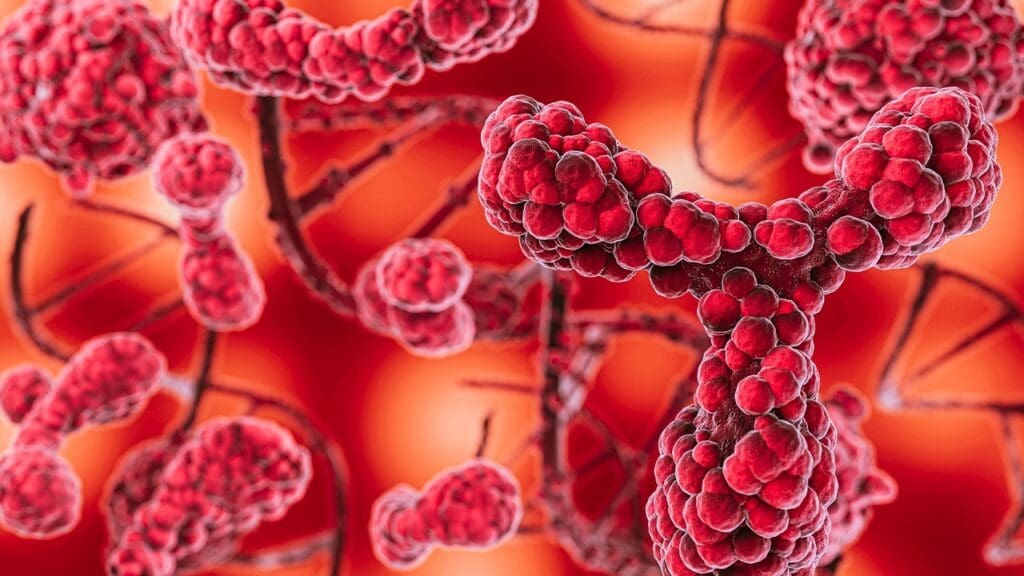Last Updated on November 27, 2025 by Bilal Hasdemir

At Liv Hospital, we know that every cancer journey is different. This is true, even more so for leukemia metastasis and other complex cancers. Unlike solid tumors, leukemia affects the blood-forming tissues. It spreads through the bloodstream, making hematogenous spread a key part of its nature.
Leukemia doesn’t grow into a solid tumor like other cancers do. Instead, it starts spreading through the blood right away. This key difference helps us understand how metastatic cancer cells in leukemia are different from those in other cancers.
Key Takeaways
- Leukemia is a cancer of the blood-forming tissues that spreads through the bloodstream.
- Unlike solid tumors, leukemia doesn’t form a primary tumor mass.
- Hematogenous spread is intrinsic to leukemia’s biology.
- Understanding leukemia’s unique metastasis patterns is key for effective treatment.
- Leukemia’s metastasis is very different from other types of cancer.
Understanding Leukemia as a Blood Cancer
Leukemia is a blood cancer that affects the blood and bone marrow. It’s marked by an abnormal increase in white blood cells.
The Unique Nature of Blood-Forming Tissue Cancers
Leukemia starts in the body’s blood-forming tissues, mainly in the bone marrow. This makes it different from solid tumor cancers. Leukemia can spread through the bloodstream, affecting many organs at once.
Types of Leukemia and Their Characteristics
Leukemia is divided into types based on how fast it grows and the type of cell involved. Knowing these types helps doctors choose the right treatment.
Acute vs. Chronic Leukemias
Acute leukemias grow fast and need quick treatment. Chronic leukemias grow slower, allowing for a more gradual treatment plan.
Myeloid vs. Lymphocytic Variants
Leukemia types are also based on the blood cell affected. Myeloid leukemias affect cells that become different blood cells, except lymphocytes. Lymphocytic leukemias, though, target lymphocytes, which are key for fighting off infections.
| Type of Leukemia | Cell Lineage | Progression |
|---|---|---|
| Acute Myeloid Leukemia (AML) | Myeloid | Acute |
| Chronic Myeloid Leukemia (CML) | Myeloid | Chronic |
| Acute Lymphocytic Leukemia (ALL) | Lymphocytic | Acute |
| Chronic Lymphocytic Leukemia (CLL) | Lymphocytic | Chronic |
The Traditional Concept of Cancer Metastasis
Cancer metastasis is when cancer cells move from where they first started to other parts of the body. This is key to understanding how cancer grows and finding ways to treat it.
What Does It Mean When Cancer Has Metastasized?
When cancer spreads, it means cells have left the main tumor. They travel through blood or lymph and start new tumors elsewhere. an oncologist, says, “Metastasis is a complex process involving multiple steps, and understanding these steps is key for targeted therapies.”
“The process of metastasis is not just about the spread of cancer cells; it’s about the interactions between cancer cells and their microenvironment.”
The Classic Metastatic Cascade in Solid Tumors
The metastatic cascade in solid tumors is a series of steps. It lets cancer cells move from the main tumor to other places. This includes:
Detachment from Primary Site
Cancer cells break away from the main tumor. This happens because of changes in how cells stick together. This step is very important in the metastatic process.
Invasion of Surrounding Tissue
After breaking away, cancer cells move into the tissue around them. They do this by making enzymes that break down the tissue.
Intravasation into Circulation
Then, cancer cells get into the blood or lymphatic vessels. This lets them travel to other places in the body.
| Step | Description |
|---|---|
| Detachment | Cancer cells detach from the primary tumor |
| Invasion | Cancer cells invade surrounding tissue |
| Intravasation | Cancer cells enter the bloodstream or lymphatic vessels |
Understanding cancer metastasis is vital for finding effective treatments. By knowing the steps of the metastatic cascade, we can find ways to stop it.
Does Leukemia Metastasize? Understanding Its Dissemination
Leukemia spreads differently than solid tumors. It’s not like metastasis, but it’s how leukemia works. This cancer affects the blood-forming tissues in a unique way.
Hematogenous Spread as Intrinsic to Leukemia
Leukemia cells are always in the blood from the start. This is called hematogenous spread. It’s a key part of leukemia, unlike solid tumors.
Why Leukemia Doesn’t Follow Traditional Metastatic Patterns
Leukemia doesn’t spread like solid tumors do for a few reasons:
Circulation of Malignant Cells from Onset
Leukemic cells are in the blood right away. They don’t need to grow into a tumor to spread.
Absence of Primary Tumor Mass
Leukemia doesn’t form a big tumor like solid tumors do. It starts in the bone marrow and spreads through the blood. This makes the idea of metastasis not really fit.
“The dissemination of leukemia is not a late event, as seen in many solid tumors, but it’s an early and intrinsic aspect of the disease.”
A recent study found that
“Leukemia’s systemic nature from the outset challenges the conventional understanding of cancer spread.”
Pathways of Cancer Spread: Local Invasion vs. Hematogenous Spread
It’s key to know how cancer spreads to find good treatments. Cancer cells can move in many ways, affecting how the disease grows and how well treatments work. We’ll look at how cancer spreads, focusing on local invasion in solid tumors and hematogenous spread.
Mechanisms of Local Invasion in Solid Tumors
Local invasion happens when cancer cells from solid tumors move into nearby tissues. This involves complex interactions between cancer cells and their surroundings. It includes breaking down the extracellular matrix and moving into nearby tissues. Local invasion is a big step in solid tumors growing.
Haematogenous Metastases: How Cancers Enter the Bloodstream
Hematogenous metastases happen when cancer cells get into the bloodstream. This lets them travel to other organs. This process is common in aggressive cancers. It involves getting into blood vessels, surviving in the blood, and getting into new tissues. Hematogenous spread is a main way cancers spread.
Lymphatic System Involvement in Cancer Spread
The lymphatic system also helps cancer spread. Cancer cells can get into lymphatic vessels. From there, they can go to lymph nodes and possibly other organs. The lymphatic system plays a big role in cancer staging and treatment planning.
In summary, cancer spread happens through many ways, like local invasion, hematogenous metastases, and the lymphatic system. Knowing these ways is key to making good cancer treatments.
Genetic and Molecular Features of Metastatic Cancer Cells
Metastatic cancer cells, like those in leukemia, have special genetic and molecular traits. These traits help them spread and grow. They are different from non-metastatic cells and are key to understanding how cancer spreads.
Genetic Alterations Enabling Metastasis
Metastatic cancer cells have specific genetic changes that let them invade and settle in other tissues. These changes affect genes related to moving, invading, and surviving. For example, some genes help them grow and spread more.
Metabolic Adaptations in Metastatic Cells
Metastatic cells also change their metabolism to survive and grow in new places. They adjust how they make energy, take in nutrients, and make new molecules. This lets them grow and multiply in different organs.
How Leukemic Cells Differ Genetically from Other Metastatic Cells
Leukemic cells, being from blood, have unique genetic and molecular features. Their ability to move through the blood and enter tissues is different from solid tumors. Knowing these differences is important for creating treatments for leukemia and other cancers.
Metastatic Malignant Cancer: Solid Tumor Progression
The process of metastasis in solid tumors is complex. It leads to the formation of secondary tumors. This is not random but follows a series of stages.
Stages of Metastatic Development in Carcinomas
Metastatic development in carcinomas goes through several stages. These include local invasion, intravasation, circulation, extravasation, and colonization. Each stage is critical for cancer cells to adapt and grow in new environments.
Metastatic Neoplasm Formation and Growth
Metastatic neoplasms form when cancer cells complete the metastatic cascade. These secondary tumors can grow and spread. Understanding how they grow is key to finding effective treatments.
Metastatic Cancer Meaning and Classification
Metastatic cancer spreads from its original site to another part of the body. Its classification depends on the primary tumor’s location and cancer cell characteristics. Accurate classification helps in choosing the right treatment.
Cancer experts say, “Understanding metastatic cancer is vital for personalized treatment.”
“Cancer treatment is not one-size-fits-all; it requires a personalized approach based on the specific characteristics of the patient’s cancer,”
This highlights the need to know metastatic cancer well.
Leukemia’s Systemic Nature: Why It’s Different from Metastatic Carcinoma
Leukemia is different from solid tumors because it starts systemically. This means it affects the whole body from the start. It’s a cancer of the blood-forming tissues, like bone marrow and the lymphatic system.
Absence of Primary Tumor in Leukemia
Leukemia doesn’t have a primary tumor like other cancers do. Solid tumors start in one place and can spread. But leukemia affects the bone marrow and can show up in different parts of the body at once.
Bone Marrow Infiltration vs. Distant Metastasis
Leukemia cells invade the bone marrow, unlike distant metastasis in carcinomas. This invasion messes up blood cell production. The term “metastasis” doesn’t really fit leukemia because it’s already spread throughout the body.
Extramedullary Manifestations of Leukemia
Leukemia can show up outside the bone marrow, known as extramedullary manifestations. This includes:
Central Nervous System Involvement
Some types of leukemia can affect the central nervous system (CNS). Leukemic cells can get into the CNS, which needs special treatment.
Organ Infiltration Patterns
Leukemia cells can also get into organs like the liver, spleen, and lymph nodes. This can cause them to get bigger and not work right. The way these organs get affected can depend on the type of leukemia.
| Organ/System | Manifestation |
|---|---|
| Central Nervous System | Infiltration by leukemic cells |
| Liver | Enlargement and dysfunction |
| Spleen | Splenomegaly |
| Lymph Nodes | Lymphadenopathy |
For more on leukemia and its systemic nature, check out studies in scientific journals. Like this article on the mechanisms of.
Clinical Implications of Leukemia’s Spread Pattern
Leukemia’s spread pattern affects how doctors diagnose, stage, and treat it. Unlike solid tumors, leukemia starts in the blood and bone marrow. This means it’s systemic from the start.
Diagnostic Approaches for Systemic vs. Metastatic Cancers
Diagnosing leukemia is different from solid tumors. Doctors use bone marrow biopsies, blood tests, and sometimes lumbar punctures. These help check if the cancer has reached the brain.
Staging Differences Between Leukemia and Metastatic Malignancies
Staging leukemia is not like staging solid tumors. Leukemia looks at white blood cell count, genetics, and molecular markers. Solid tumors focus on tumor size, lymph nodes, and distant spread.
The Impact on Patient Management
How doctors manage leukemia and metastatic cancers differs. Leukemia treatment often starts with systemic therapies like chemotherapy. This is because leukemia is in the blood and bone marrow from the start.
| Characteristics | Leukemia | Metastatic Solid Tumors |
|---|---|---|
| Diagnostic Approach | Bone marrow biopsy, blood tests | Imaging studies, biopsy of primary or metastatic site |
| Staging System | Based on cell count, cytogenetics, molecular markers | TNM staging (Tumor size, Node involvement, Metastasis) |
| Treatment Strategy | Systemic therapies (chemotherapy, targeted therapy) | May involve local therapies (surgery, radiation) for metastatic sites |
Treatment Strategies: Metastatic Tumor Treatment vs. Leukemia Therapy
It’s important to know the difference between treating metastatic tumors and leukemia. Both involve cancer, but their treatments are different. This is because they are different diseases.
Systemic Therapies for Blood Cancers
Leukemia is a disease that affects the whole body. So, it needs systemic therapies that can reach cancer cells everywhere. These include chemotherapy, targeted therapy, and immunotherapy.
Metastatic tumors start in one place and then spread. They need different treatments.
Targeted Approaches for Metastatic Disease
Metastatic disease treatment often combines local and systemic therapies. Targeted therapies are key. They focus on specific traits of cancer cells.
Why Treatment Philosophies Differ Between Cancer Types
The main reason for different treatments is the nature of the diseases. Leukemia affects the whole body. So, treatments need to target cancer cells everywhere.
The Role of Stem Cell Transplantation
Stem cell transplantation is vital for some leukemias and metastatic cancers. It replaces bad bone marrow with healthy stem cells.
Immunotherapies for Circulating Malignancies
Immunotherapy uses the immune system to fight cancer. It’s promising for treating leukemia and some metastatic cancers.
Recent Advances in Understanding Malignant Metastatic Cancer
Recent studies have greatly improved our understanding of malignant metastatic cancer. They have shed new light on the complex processes involved. This is very important for leukemia, a cancer that starts in blood-forming tissue.
New Insights into Leukemia Dissemination
Leukemia dissemination is a complex process. It’s different from how solid tumors spread. Research shows leukemia cells can spread to many tissues and organs.
This leads to a disease that affects the whole body. It needs a wide range of treatments. For more on cancer stem cells, visit our detailed resource on cancer stem.
Emerging Concepts in Metástase Cancer Research
New ideas in metastasis research show how important it is to understand cancer cells and their environment. Studies have found that cancer cells’ ability to spread is influenced by many factors.
Implications for Future Therapeutic Approaches
New research has big implications for future treatments. Targeted therapies that focus on leukemia and other metastatic cancers are being developed. This offers hope for better patient outcomes.
As we learn more about malignant metastatic cancer, it’s clear we need a deep understanding of these diseases. By embracing new ideas and advancing our knowledge, we can develop more personalized and effective treatments.
Conclusion: Reframing Our Understanding of Cancer Spread
We’ve looked into how cancer spreads, focusing on leukemia’s unique way. Unlike solid tumors, leukemia spreads through the blood. This is key for both finding and treating the disease.
Leukemia’s spread calls for special treatment plans. Knowing how it differs from other cancers helps us create better treatments. This can lead to better care for patients.
Our talk shows how vital research into cancer spread is, even more so for leukemia. As we learn more, we can make treatments more effective. This will help improve care for those with this tough disease.
FAQ
What is the main difference between leukemia and other types of cancer when it comes to metastasis?
Leukemia is a blood cancer that doesn’t form a primary tumor mass like solid cancers. Instead, it spreads through the bloodstream from the onset, making its metastatic process intrinsic to the disease.
How do different types of leukemia affect its spread?
Understanding the differences between acute and chronic leukemias, as well as myeloid and lymphocytic leukemias, is key. This helps us see how leukemia progresses and spreads.
What is metastasis, and how does it occur in solid tumors?
Metastasis is when cancer cells spread from the primary site to other parts of the body. In solid tumors, this happens through detachment, invasion, and entry into the circulatory system.
Does leukemia follow the traditional metastatic pattern seen in other cancers?
No, leukemia doesn’t follow the traditional metastatic pattern. Its cells are circulated throughout the body from the start, making hematogenous spread intrinsic to the disease.
What are the different pathways through which cancer can spread?
Cancer can spread through local invasion in solid tumors or hematogenous spread, where cancer cells enter the bloodstream. The lymphatic system also plays a role in cancer dissemination.
How do leukemic cells differ genetically from other metastatic cancer cells?
Leukemic cells have unique genetic alterations and metabolic changes. These changes help them spread through the bloodstream, making them different from other metastatic cancer cells.
What are the clinical implications of leukemia’s spread pattern?
The systemic nature of leukemia affects how we diagnose, stage, and manage it. This is different from metastatic malignancies.
How do treatment strategies differ between metastatic tumors and leukemia?
Treatment for metastatic tumors often involves targeted approaches. Leukemia therapy, on the other hand, relies on systemic therapies like stem cell transplantation and immunotherapies, due to its systemic nature.
What are the latest advances in understanding leukemia dissemination?
Recent research has given us new insights into leukemia dissemination. It has also shed light on emerging concepts in metastasis research and implications for future therapeutic approaches.
What is metastatic carcinoma, and how does it differ from leukemia?
Metastatic carcinoma refers to cancer that has spread from its original site to other parts of the body. Unlike leukemia, it typically originates from a primary tumor mass and follows a different metastatic pattern.
How is metastatic cancer classified and treated?
Metastatic cancer is classified based on its origin and the extent of its spread. Treatment strategies vary depending on the type of cancer, its genetic and molecular features, and the patient’s overall condition.
References
- National Cancer Institute (NCI): https://www.cancer.gov/types/metastatic-cancer
- Signal Transduction and Targeted Therapy / Nature: https://www.nature.com/articles/s41392-024-01885-2
- Blood / ASH Publications: https://ashpublications.org/blood/article/110/11/2805/74411/Dynamic-In-Vivo-Imaging-Reveals-That-Leukemia
- Future Oncology / Taylor & Francis Online: https://www.tandfonline.com/doi/full/10.2217/fon.11.112
- Signal Transduction and Targeted Therapy / Nature: https://www.nature.com/articles/s41392-020-0134-x








